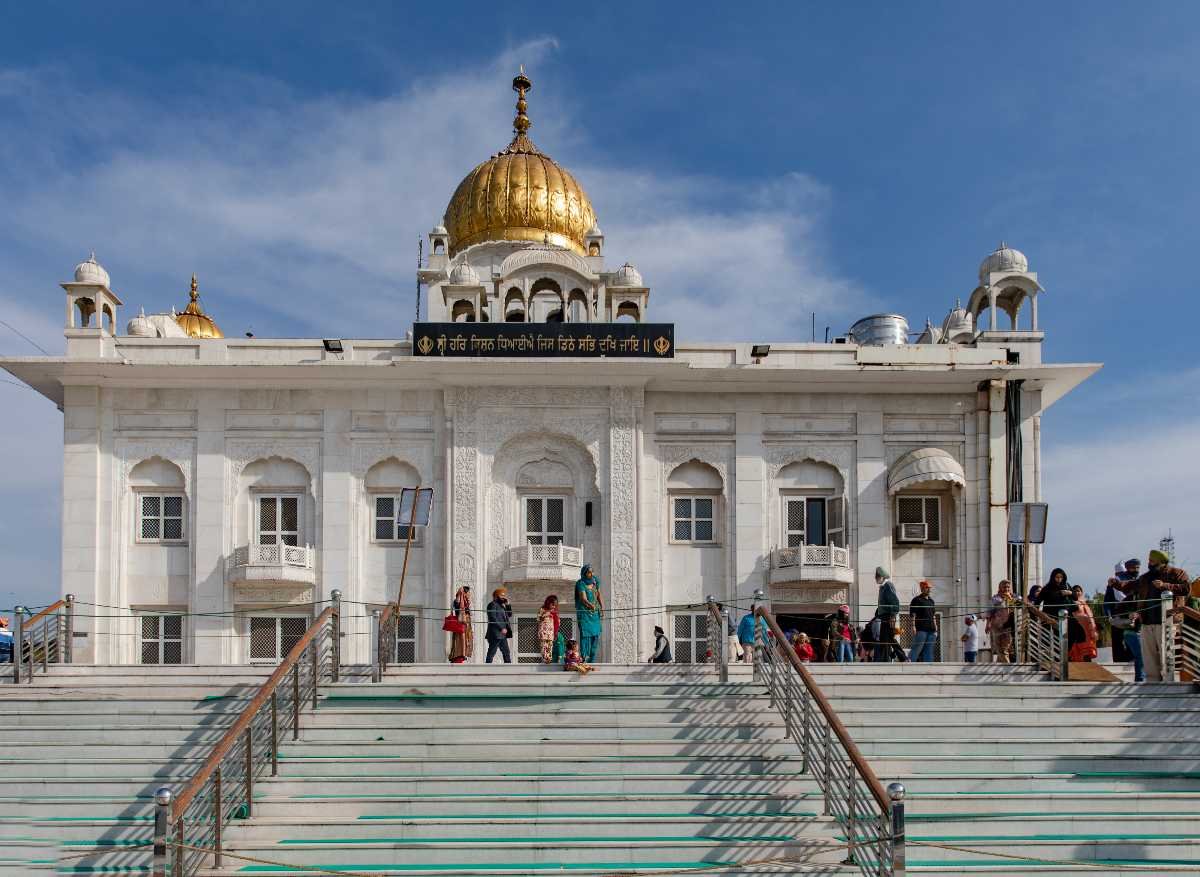Travelling to India for spiritual tourism, particularly to visit gurdwaras, can be an enriching experience, offering deep spiritual insights and a chance to explore the rich Sikh heritage. However, given the diversity and complexity of the country, there are potential pitfalls that travellers should be aware of. Below, I’ll outline common mistakes made during such trips and provide practical tips on how to avoid them, ensuring that your journey is smooth, safe, and spiritually fulfilling.
1. Lack of Research and Planning
Mistake: One of the most common mistakes travellers make is not doing enough research before their trip. India is vast, with each region having its own cultural nuances, climate, and logistical challenges. This can lead to unanticipated difficulties, such as extreme weather conditions, transportation issues, or visiting times not aligning with your plans.
Solution: Begin your planning well in advance. Research the gurdwaras you want to visit, focusing on their location, historical significance, and the best time of year to visit. For example, Harmandir Sahib (Golden Temple) in Amritsar sees peak crowds during festivals, so if you wish to avoid the rush, plan your visit accordingly. Also, consider weather conditions; summers in North India can be extremely hot, while winters can be chilly. Align your travel dates with these factors to make your experience more comfortable.
2. Overlooking Local Customs and Etiquette
Mistake: Failing to understand and respect local customs and religious practices can lead to uncomfortable situations or even offend locals. For instance, not covering your head while entering a gurdwara or walking with shoes on inside the premises are considered disrespectful.
Solution: Familiarise yourself with the basic customs of gurdwara etiquette before your visit. Always carry a scarf or head covering, as it’s mandatory to cover your head in a gurdwara. Remove your shoes and wash your hands before entering. Additionally, avoid pointing your feet towards the Guru Granth Sahib (the holy scripture) when sitting inside the prayer hall. Showing respect and understanding of local customs will enhance your experience and be appreciated by the community.
3. Ignoring Health Precautions
Mistake: Travelling in India, especially to remote areas, can expose you to health risks if you’re not adequately prepared. Common issues include foodborne illnesses, water contamination, and diseases like malaria or dengue in certain regions.
Solution:Take necessary health precautions before and during your trip. Visit a travel clinic to get recommended vaccinations, such as those for hepatitis A, typhoid, and tetanus. Drink only bottled or filtered water, and be cautious with street food, especially if you have a sensitive stomach. Insect repellent is crucial if you’re travelling during mosquito season. Carry a basic medical kit with you, including medications for common ailments like diarrhoea, fever, and colds. This is particularly important when travelling to remote areas where medical facilities may be limited.
4. Inadequate Financial Planning
Mistake: Many travellers underestimate the financial aspect of their trip. This includes not carrying enough cash, especially in remote areas where ATMs may be scarce, or failing to budget for unexpected expenses like emergency transport or medical care.
Solution: Plan your finances meticulously. While major cities have ample ATMs and places that accept cards, rural areas may not. Carry sufficient cash in Indian Rupees, and break it into smaller denominations for convenience. It’s wise to inform your bank of your travel plans to avoid issues with your cards. Additionally, have a buffer in your budget for unforeseen expenses, such as health emergencies or last-minute changes in your travel plans.
5. Underestimating Travel Logistics
Mistake: Navigating India’s transportation system can be challenging, especially if you’re unfamiliar with the language or the local routes. This can lead to delays, missed connections, or even getting lost.
Solution: Familiarise yourself with the modes of transportation available, from trains and buses to taxis and rickshaws. Apps like Google Maps are helpful in urban areas, but rural regions may require asking locals for directions. Consider hiring a local guide or driver, especially for remote areas. Booking train or bus tickets in advance is advisable, particularly during peak travel seasons. Additionally, keep a physical map and the contact details of your accommodations handy in case your phone loses signal or runs out of battery.
6. Lack of Flexibility in Itinerary
Mistake: Creating an overly rigid itinerary can lead to stress and disappointment, especially if unforeseen events like weather changes, festival closures, or transportation delays disrupt your plans.
Solution: While it’s essential to have a plan, it’s equally important to be flexible. Allow extra time in your schedule for unforeseen delays or opportunities to explore unexpected places. For example, if a local festival or religious event occurs, it might be worth adjusting your plans to experience it. Being open to changes will not only reduce stress but could also lead to unexpected and memorable experiences.
7. Cultural Insensitivity
Mistake: India is a culturally diverse country, and what might be acceptable in one region may not be in another. Cultural insensitivity, whether intentional or not, can lead to uncomfortable situations or offend locals.
Solution: Be mindful of cultural differences and adapt accordingly. For example, while photographing people or religious sites, always ask for permission. Dress modestly, especially when visiting religious sites. Understanding the local customs and showing respect will enhance your interactions and help you build positive relationships during your journey.
8. Overpacking or Underpacking
Mistake: Packing too much can make travelling cumbersome, while underpacking might leave you without essential items, especially in remote areas where certain goods may not be readily available.
Solution: Pack smart by considering the climate, the locations you’ll visit, and the availability of amenities. For gurdwara visits, comfortable and modest clothing is essential. Lightweight, breathable fabrics work well for the hot and humid climate, while a shawl or jacket might be necessary for cooler evenings or mountainous regions. Don’t forget essentials like a head covering, comfortable shoes, and a reusable water bottle. Packing a small first-aid kit, toiletries, and any necessary medications is also crucial, especially for remote areas.
9. Not Respecting the Sacredness of the Site
Mistake: Treating gurdwaras as just another tourist site rather than a place of worship can lead to behaviour that is considered disrespectful, such as taking selfies in prayer halls or talking loudly.
Solution: Remember that gurdwaras are sacred spaces. Approach your visit with reverence and mindfulness. When inside a gurdwara, maintain a quiet demeanour, and refrain from using your phone unless necessary. Photography may be allowed in some areas, but avoid taking pictures in prayer halls or of people in prayer without permission. Engage with the spiritual aspect of the visit—participate in the prayers, listen to the kirtan (spiritual hymns), and take time for personal reflection.
10. Not Being Mindful of Local Security Concerns
Mistake: While India is generally safe for travellers, certain areas, especially remote ones, may pose security risks. Not being aware of these can lead to unsafe situations.
Solution: Stay informed about the security situation in the regions you plan to visit. Check travel advisories from your government and consult with local authorities or your accommodation about areas to avoid. When travelling in remote regions, it’s wise to travel during daylight hours and avoid isolated areas. Keep your belongings secure, and be cautious when interacting with strangers. Register your trip with your embassy, especially if you’re visiting areas known for political unrest or natural hazards.
11. Overlooking the Importance of Language
Mistake: Assuming that everyone speaks English can create communication barriers, particularly in rural areas where Hindi or regional languages are more prevalent.
Solution: Learn a few basic phrases in Hindi or the local language of the regions you’re visiting. Simple greetings, directions, and polite expressions can go a long way in facilitating communication and building rapport with locals. Carry a phrasebook or use translation apps to help bridge any language gaps. Even minimal effort in speaking the local language is often appreciated and can lead to more meaningful interactions.
12. Forgetting to Respect the Environment
Mistake: Failing to consider the environmental impact of your visit can contribute to pollution and disrespect the sacred nature of the places you visit.
Solution: Practise responsible tourism by minimising your environmental footprint. Carry a reusable water bottle and avoid single-use plastics. Dispose of waste properly, and if you’re visiting remote or natural areas, ensure that you leave no trace. Participating in or donating to local conservation efforts, such as tree planting around gurdwaras, can also be a way to give back to the community.
Conclusion
Spiritual tourism in India, especially when visiting gurdwaras, is a deeply rewarding experience that offers both spiritual growth and cultural enrichment. By avoiding common mistakes and following the tips provided, you can ensure that your journey is respectful, safe, and fulfilling. Remember that each gurdwara you visit is not just a historical site but a living, breathing place of worship with a vibrant community. Approach your travels with humility, respect, and an open heart, and you will find that the blessings of your journey extend far beyond the physical trip itself.










